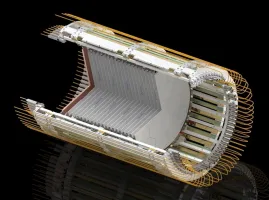Blog Credit: Trupti Thakur
Image Courtesy: Google
The Einstein’s Ring
A fascinating picture of a “bejeweled” cloud of light around a quasar was recently taken by the James Webb Space Telescope (JWST). This picture has sparked a lot of interest in the astronomy community. This picture shows an “Einstein ring,” which is made up of four bright spots around the halo of quasar RX J1131-1231, which is about 6 billion light-years away in the constellation Crater.
Understanding the Quasar RX J1131-1231
A quasar is basically a supermassive black hole in the middle of a young galaxy. It is busy consuming huge amounts of matter, which releases strong energy jets into space. Astronomers have already found this kind of quasar, and JWST has now taken a very clear picture of it. A strange effect in space called gravitational lensing is what makes the quasar in this picture look so different.
Gravitational Lensing Explained
When light from a faraway celestial object, like a galaxy or quasar, passes close to a massive object, the space-time around the massive object curves, which bends the direction of the light. This is called gravitational lensing. It looks like the light is wrapping around the huge item because of this curve. The lensing object in the case of RX J1131-1231 is an unknown galaxy that lies between the quasar and Earth. It bends the quasar’s light into the shape that was seen.
The Phenomenon of Bright Spot Duplication
The JWST picture of RX J1131-1231 also shows four bright spots that stand out within the glowing loop. At first glance, these might look like they represent several different celestial things. The lensing effect, on the other hand, makes them look like mirror copies of the same bright spot from the quasar. Duplications like these happen when the viewer, the faraway object, and the object that is lensing the object are almost perfectly lined up. This lets multiple images of the same object show up.
Significance and Implications
Not only does this discovery by the JWST help us understand RX J1131-1231 and gravitational lensing better, but it also makes it possible to study and look at faraway, dim celestial bodies that we wouldn’t be able to see with current telescopes. Astronomers can improve their ideas about the structure and history of the universe by taking detailed pictures of these things.
Blog By: Trupti Thakur
11
JulThe Einstein’s Ring
Jul 11, 2024Recent Blog
The New Accessibility Feature of AppleMay 14, 2025
The Digital Threat Report 2024May 13, 2025
The MADMAX ExperimentMay 12, 2025
The EntraID Data ProtectionMay 10, 2025
The MAHA-EVMay 07, 2025




